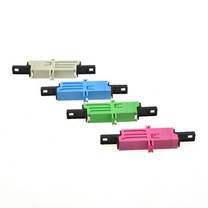
Fiber optic fusion splicing is one of the common methods used when connecting optical fibers, allowing for low loss and highly reliable connections. The following measures can be taken to reduce the loss of fiber optic fusion splices:
1. Clean: Before performing fiber optic fusion splicing, you need to make sure that the fiber and the connected part of the device are clean and dust-free. Using cleaning tools such as detergents and cotton cloths can effectively remove dirt and grease and reduce losses.
2. Precise cutting: The loss of fiber optic connection is usually related to the quality of the fiber cross section. Therefore, when performing fiber cutting, you need to use high precision cutting tools to ensure the flatness and perpendicularity of the fiber end face.
3. Fusing procedure: When performing fiber optic fusion splicing, the correct fusion procedure needs to be followed, including preheating, alignment, fusion, cooling and other steps. Proper fusion splicing procedures can reduce twisting and tilting of the fiber end face, thus reducing the loss of the connection.
4. Inspection and testing: After performing fiber optic fusion splicing, optical testing is required to check the quality and loss of the connection. For example, use equipment such as optical power meters and fiber reflection testers to check the loss and reflection loss of the connection.
5. Choose the right fusion splicing equipment and accessories: Choosing high-quality fiber optic fusion splicing equipment and accessories can ensure the quality and stability of the connection. In addition, choosing the right fiber and accessories can also reduce the loss of the connection.
In summary, reducing the loss of fiber optic fusion splicing requires a combination of several factors, including fiber cutting, cleaning, connection, and fusion splicing procedures, as well as using high-quality equipment and accessories, and confirming the quality and loss of the connection through testing and inspection.






